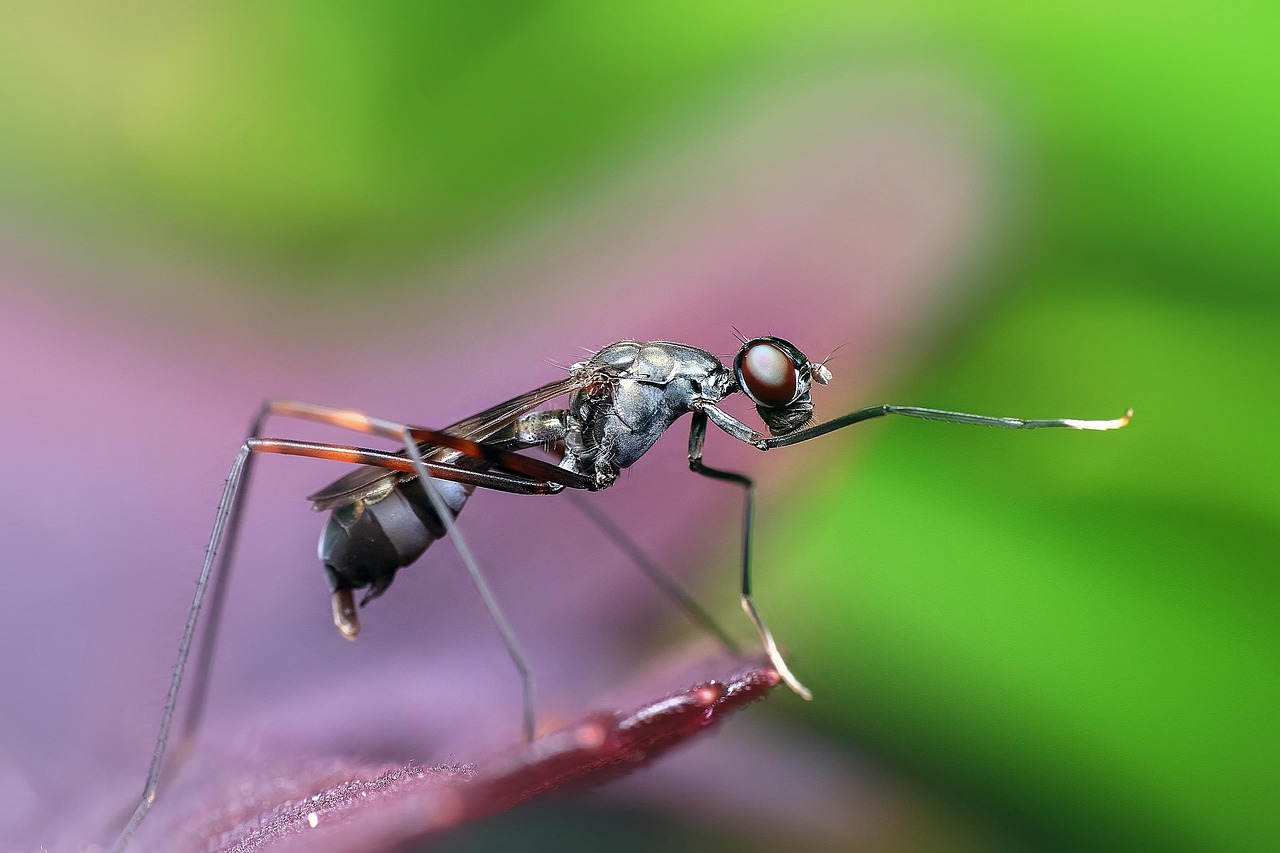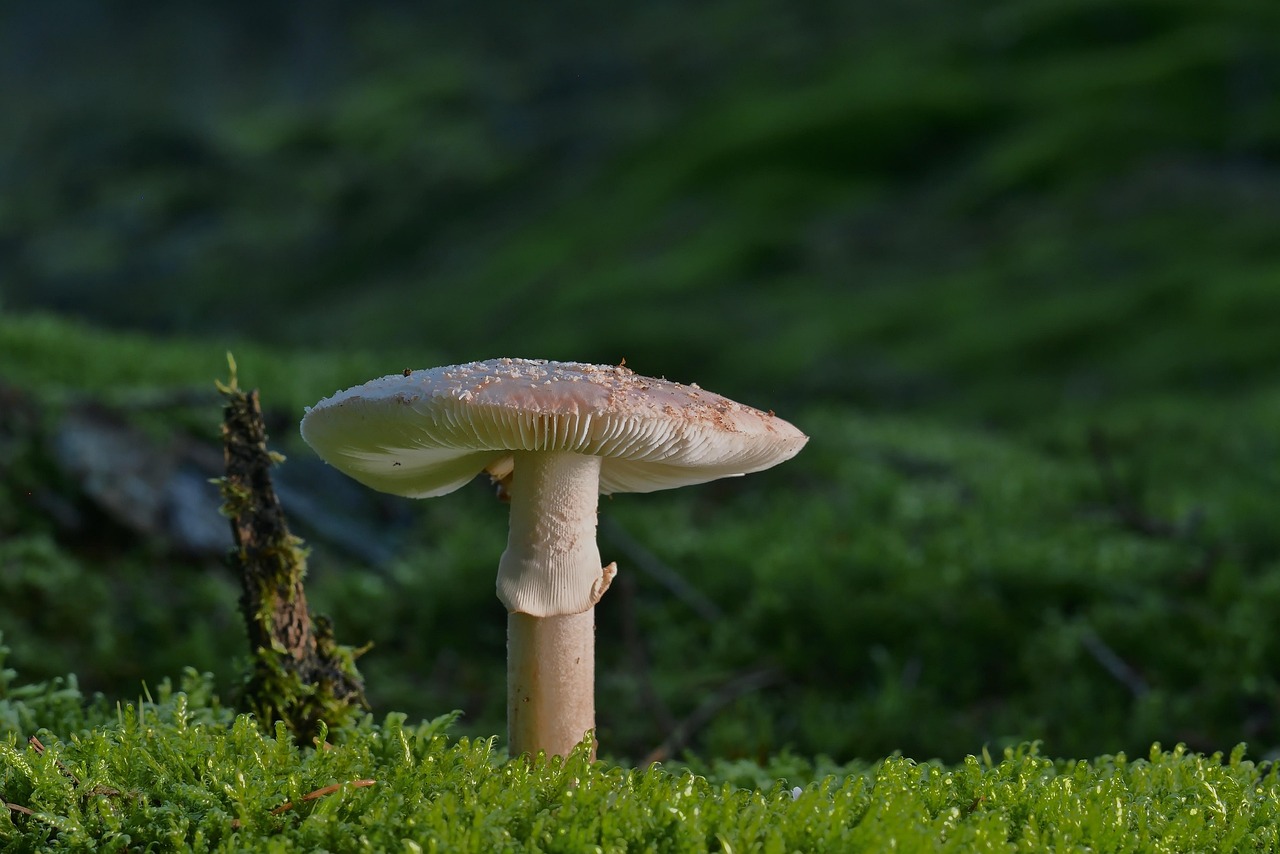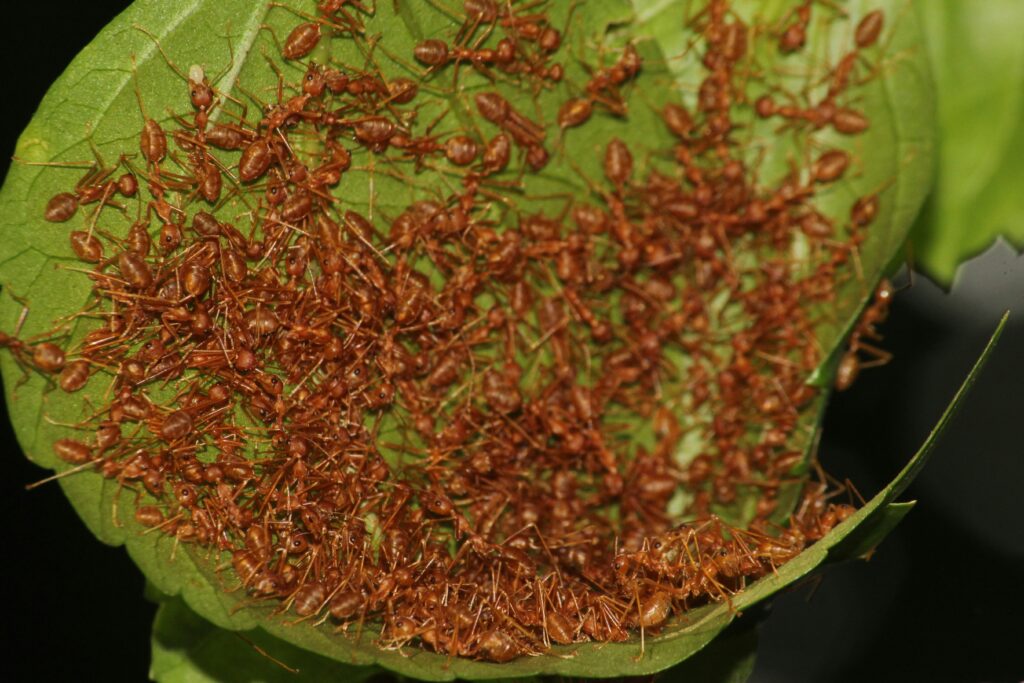Picture this: millions of tiny farmers marching in perfect formation through tropical rainforests, carrying leaf fragments that look like green umbrellas above their heads. These aren’t cartoon characters from a children’s book — they’re real-life agricultural pioneers who’ve been perfecting sustainable farming techniques for over 50 million years. Long before humans discovered agriculture, leafcutter ants had already mastered the art of cultivation, creating one of nature’s most sophisticated food production systems. These remarkable insects don’t just collect food like other ants; they grow it from scratch in underground gardens that would make any modern farmer jealous.
The Ancient Art of Ant Agriculture

Leafcutter ants represent one of evolution’s most stunning achievements in agricultural innovation. These insects began farming roughly 15 million years before humans even appeared on Earth, developing complex cultivation systems that rival modern agricultural practices. What makes their story even more incredible is that they didn’t stumble upon farming by accident — they evolved sophisticated behaviors, social structures, and biological adaptations specifically for this purpose. Their agricultural success is so advanced that it supports some of the largest and most complex societies in the animal kingdom, with colonies housing up to 8 million individuals. Think of them as nature’s first agricultural revolution, complete with specialized workers, sophisticated crop management, and sustainable harvesting practices.
Meet the Master Farmers of the Insect World
The leafcutter ant family includes about 47 species, with the most well-known being Atta and Acromyrmex genera found throughout Central and South America. These ants are easily recognizable by their impressive leaf-cutting abilities and the distinctive parade of workers carrying perfectly cut leaf fragments back to their nests. What sets them apart from other ant species isn’t just their size — some workers can be nearly an inch long — but their incredible strength and precision. A single worker can carry leaf pieces weighing 20 times their own body weight, which would be like a human effortlessly carrying a small car overhead. Their powerful mandibles can slice through leaves with the precision of surgical scissors, creating clean cuts that prevent the leaves from losing moisture during transport.
The Incredible Journey from Forest Floor to Underground Farm

The farming process begins in the forest canopy, where worker ants carefully select specific types of leaves based on their nutritional content and freshness. These aren’t random choices — the ants have learned through millions of years of evolution which plants produce the best crop yields and which ones might contain harmful chemicals. Once the perfect leaves are identified, specialized cutting workers use their razor-sharp mandibles to slice circular or semi-circular pieces, creating what looks like nature’s own cookie-cutter operation. The freshly cut leaves are then passed down through a relay system of workers, eventually reaching the forest floor where transport teams take over. This entire operation runs 24 hours a day, with night shifts taking advantage of cooler temperatures and higher humidity that help preserve the leaf fragments during their journey home.
Inside the Underground Mushroom Gardens

Deep beneath the forest floor lies a marvel of biological engineering — vast underground chambers that house the ants’ fungus gardens. These subterranean farms can extend several meters below ground and contain dozens of interconnected chambers, each specifically designed for different stages of the cultivation process. The gardens themselves look like intricate landscapes of spongy, grayish-white fungal growth that carpets the chamber floors and walls. Temperature and humidity are carefully controlled through the colony’s ventilation system, creating perfect growing conditions that remain stable year-round. The entire setup resembles a high-tech greenhouse operation, complete with climate control, waste management, and specialized growing areas for different crops.
The Fungus That Changed Everything

The star of this agricultural show isn’t actually the ants themselves, but a remarkable fungus called Leucoagaricus gongylophorus that exists nowhere else in nature. This fungus has co-evolved with leafcutter ants for millions of years, becoming completely dependent on the ants for survival while providing them with their primary food source. What makes this fungus truly special is its ability to break down the tough cellulose found in leaves, converting it into easily digestible nutrients that the ants can absorb. The fungus produces specialized structures called gongylidia — swollen hyphal tips that are rich in proteins and carbohydrates — which serve as the ants’ main food source. This symbiotic relationship is so perfect that neither the ants nor the fungus can survive without the other, creating one of nature’s most successful partnerships.
A Society Built on Specialized Roles

Leafcutter ant colonies operate like highly organized corporations, with each worker having a specific job based on their size and capabilities. The largest workers, called majors or soldiers, defend the colony and can cut through the toughest plant materials with their massive heads and powerful jaws. Medium-sized workers, known as media workers, handle most of the leaf cutting and transport duties, while the smallest workers, called minims, tend to the fungus gardens and care for the young. Even more fascinating is the presence of tiny “hitchhiker” ants that ride on the leaf fragments carried by transport workers, serving as bodyguards against parasitic flies that try to attack the carriers. This division of labor is so efficient that it allows the colony to operate multiple complex tasks simultaneously, from harvesting and processing to defense and nursery care.
The Sophisticated Science of Leaf Selection
Leafcutter ants don’t just grab any available vegetation — they’re incredibly selective about what they bring home to their fungus gardens. Scout ants taste potential food sources, analyzing the chemical composition of leaves to determine their suitability for fungal cultivation. They actively avoid plants with high concentrations of defensive chemicals like tannins, alkaloids, or toxic compounds that could harm their precious fungus crops. Remarkably, these ants can detect chemical changes in plants that occur due to seasonal variations, disease, or even previous insect damage. Their selection process is so sophisticated that they often reject leaves that look perfectly healthy to human eyes but contain subtle chemical signatures that indicate they’re not optimal for farming. This level of agricultural knowledge rivals that of experienced human farmers who spend years learning about soil chemistry and crop rotation.
From Leaves to Food: The Processing Pipeline

Once fresh leaf fragments arrive at the colony, they enter a sophisticated processing system that would impress any food manufacturing operation. The leaves are first cleaned by specialized workers who remove any dirt, debris, or potentially harmful microorganisms that might contaminate the fungus gardens. Next, the leaves are chewed into a pulp-like consistency, mixed with ant saliva and fecal droplets that contain important enzymes and nutrients needed for fungal growth. This processed material, called the substrate, is then carefully incorporated into existing fungus gardens where it provides fresh nutrients for continued growth. The entire process requires precise timing and coordination — fresh substrate must be added regularly to maintain healthy fungus growth, but too much at once can overwhelm the delicate fungal ecosystem and cause crop failure.
Garden Maintenance and Pest Control

Maintaining a healthy fungus garden requires constant attention and sophisticated pest management strategies that put many human agricultural practices to shame. Worker ants continuously patrol their gardens, removing any contaminating molds, bacteria, or parasites that threaten their crops. They use their own antimicrobial secretions to sanitize the growing areas, essentially creating a sterile environment for their fungus to thrive. When harmful microorganisms do invade, the ants quickly isolate and remove infected areas, preventing the spread of disease throughout their gardens. Even more impressive is their ability to detect early signs of contamination through chemical cues, allowing them to take preventive action before problems become serious. This integrated pest management system maintains garden health without the use of harmful chemicals that could damage their symbiotic fungus partner.
The Colony’s Waste Management System
One of the most overlooked aspects of leafcutter ant agriculture is their incredibly efficient waste management system that ensures nothing goes to waste in their underground farms. Spent fungus substrate, dead plant material, and other organic waste are carefully collected and transported to specialized disposal chambers located away from active growing areas. These waste chambers function like compost piles, breaking down organic matter that eventually enriches the soil around the colony and supports plant growth in the surrounding forest. Worker ants also maintain dedicated bathroom areas and garbage dumps, preventing contamination of their clean fungus gardens. This waste management system is so effective that leafcutter ant colonies actually improve soil fertility in their local environment, creating richer growing conditions for the very plants they harvest. It’s a perfect example of sustainable agriculture that gives back to the ecosystem rather than depleting it.
Climate Control in Underground Cities

The underground chambers of leafcutter ant colonies feature sophisticated climate control systems that maintain optimal growing conditions for their fungus crops regardless of external weather conditions. The ants create complex ventilation networks with multiple air shafts that regulate temperature, humidity, and air circulation throughout their subterranean farms. During hot days, they open certain passages to increase airflow and cooling, while during cooler periods, they may restrict airflow to maintain warmth. The colony’s architecture includes thermal mass principles, with thick earthen walls that help buffer temperature fluctuations and maintain stable conditions. Some colonies even feature seasonal adjustments, with ants modifying their ventilation systems based on changing external conditions. This level of environmental control allows them to maintain year-round agricultural production even in regions with dramatic seasonal variations.
Communication Networks That Coordinate the Farm
The success of leafcutter ant agriculture depends heavily on sophisticated communication systems that coordinate activities across vast colony networks spanning hundreds of meters. Chemical trails guide workers to the best foraging sites, with different pheromone concentrations indicating trail quality, urgency, and destination type. Inside the colony, ants use tactile signals, sound vibrations, and chemical messages to coordinate garden maintenance, waste removal, and food distribution. Remarkably, they can communicate information about the quality of different food sources, allowing the colony to adjust its harvesting efforts based on real-time feedback from the gardens. Emergency communication systems also exist, enabling rapid response to threats like garden contamination, predator attacks, or structural damage to the colony. This communication network operates like a biological internet, connecting millions of individuals into a coordinated agricultural operation that responds dynamically to changing conditions.
Seasonal Strategies and Long-term Planning
Leafcutter ants demonstrate remarkable foresight in their agricultural planning, adjusting their farming strategies based on seasonal changes and long-term colony needs. During peak growing seasons, they dramatically increase their leaf harvesting activities, building up large reserves of processed substrate that can sustain their fungus gardens during leaner periods. They also vary their plant selection throughout the year, targeting different species as they become available and nutritionally optimal. Before dry seasons, colonies may focus on harvesting plants with higher moisture content or shift to more drought-resistant vegetation that will continue producing suitable leaves. Some colonies even maintain emergency food reserves by carefully managing portions of their fungus gardens, allowing certain areas to mature without harvesting so they can provide sustenance during environmental stress periods. This strategic planning ability allows them to maintain stable food production despite unpredictable environmental challenges.
The New Generation: Teaching Young Farmers
The continuation of leafcutter ant agricultural knowledge depends on sophisticated learning systems that transfer farming expertise from experienced workers to newly emerged adults. Young ants don’t instinctively know how to select good leaves, process substrate, or maintain fungus gardens — they must learn these skills through observation and practice. Experienced workers actively teach newcomers by demonstrating proper techniques, correcting mistakes, and gradually increasing responsibilities as skills develop. The learning process includes hands-on training in leaf identification, cutting techniques, substrate preparation, and garden maintenance procedures. Even more fascinating is the discovery that ants can learn from trial and error, adjusting their behaviors based on the success or failure of different approaches. This cultural transmission of agricultural knowledge ensures that each new generation maintains and even improves upon the farming techniques developed over millions of years of evolution.
Environmental Impact and Ecosystem Engineering
Leafcutter ants function as powerful ecosystem engineers, dramatically shaping the structure and function of tropical forests through their agricultural activities. Their selective harvesting creates complex patterns of plant growth and regeneration, with some species benefiting from ant pruning while others adapt defensive strategies to avoid being harvested. The soil excavation required for their underground cities brings deep nutrients to the surface and creates unique microhabitats for other organisms. Their waste management systems enrich local soil chemistry, supporting enhanced plant growth in areas surrounding their colonies. Research has shown that leafcutter ant colonies increase plant diversity and soil fertility across large areas, essentially creating patches of enhanced ecosystem productivity. Their activities also influence water infiltration, soil structure, and carbon cycling, making them key players in maintaining the health and balance of tropical forest ecosystems.
The leafcutter ant story reveals how nature solved the challenge of sustainable food production millions of years before humans began farming. These remarkable insects have created agricultural systems that are simultaneously more complex and more sustainable than many modern farming operations. Their success demonstrates the power of cooperation, specialization, and long-term thinking in building resilient food systems. As we face growing challenges in feeding our own expanding populations while protecting environmental resources, perhaps we should pay closer attention to these tiny farmers who have already figured out how to thrive without depleting the world around them. What lessons might we learn from creatures who have been perfecting sustainable agriculture since long before we existed?

